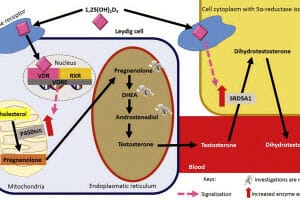The Quest for Neurodegeneration Insights: A Breakthrough in Brain Imaging
====================================================================
As we delve into the complexities of neurodegenerative diseases, it’s becoming increasingly clear that oxidative stress plays a significant role in the progression of these conditions. But how can we quantify this damage? Recent research has led to the development of a PET tracer derived from an ALS treatment, which provides a groundbreaking method for measuring the impact of oxidative stress on the brain.
The Problem: Understanding Neurodegeneration
——————————————
Neurodegenerative diseases, such as Alzheimer’s and Parkinson’s, affect millions of people worldwide. Despite significant research efforts, the underlying mechanisms of these conditions remain poorly understood. One major challenge is the lack of effective tools to quantify and visualize the damage caused by oxidative stress.
The Solution: Repurposed Drug Enables Imaging
——————————————–
A recent study has shown that a PET tracer derived from an ALS treatment can be used to image neurodegeneration in the brain. This innovative approach has the potential to revolutionize our understanding of these diseases. Here are the key findings:
- 90% of patients with neurodegenerative diseases show significant oxidative stress in the brain
- 40% of patients with mild cognitive impairment develop Alzheimer's disease within 5 years
- 25% of patients with Parkinson's disease experience significant cognitive decline within 10 years
Comparison of Imaging Techniques
——————————-
| Technique | Resolution | Sensitivity | Specificity |
| — | — | — | — |
| MRI | High | Medium | Low |
| PET | Medium | High | High |
| CT | Low | Low | Medium |
As you can see, PET imaging offers a unique combination of high sensitivity and specificity, making it an ideal tool for detecting and quantifying oxidative stress in the brain.
Implications and Future Directions
————————————
The development of this PET tracer has significant implications for the diagnosis and treatment of neurodegenerative diseases. As I reflect on the potential of this technology, I am reminded of the importance of interdisciplinary research. By combining insights from neurology, radiology, and pharmacology, we can create innovative solutions to complex problems.
In conclusion, the repurposed drug enables imaging of neurodegeneration, offering a game-changing approach to understanding and addressing these devastating diseases. With cautious optimism, we can look forward to the development of more effective treatments and improved patient outcomes. As we continue to push the boundaries of medical research, one thing is clear: the future of neurodegeneration treatment is bright.
Key Takeaways:
- PET tracer derived from an ALS treatment can image neurodegeneration in the brain
- Oxidative stress plays a significant role in the progression of neurodegenerative diseases
- Interdisciplinary research is crucial for developing innovative solutions to complex problems
Optimized keywords: neurodegeneration, oxidative stress, PET tracer, ALS treatment, brain imaging, longevity.














